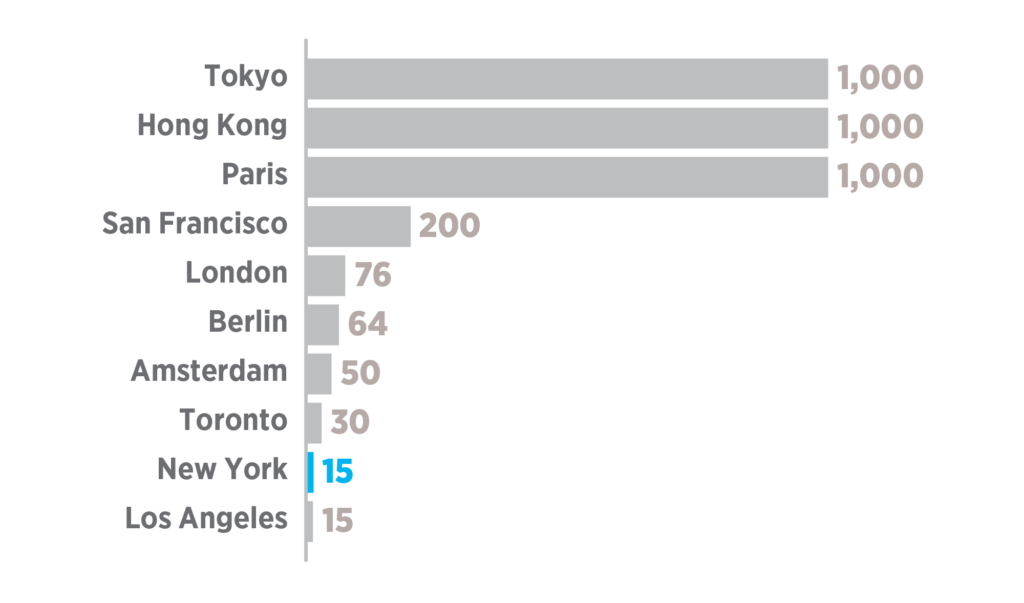On December 14th the The Federal Communications Commission (FCC) will vote on a proposal that would end net neutrality, to the objections of many civic technology advocates, civil liberties organizations and others. Net Neutrality is an FCC rule that prohibits internet service providers (ISPs) from prioritizing content from one provider over another. This rule provides a degree of “neutrality” on the internet. Whether you are a billion dollar corporation or a small independent school your content travels at the same speed. Some argue that this is unfair, and that data heavy services such as streaming video should have to pay for moving their content via the internet. But the flip side would be that in an post-net neutrality world it would be possible for ISPs to slow or block content from independent news media, academics or online support groups or others unable to pay for higher speeds.
The internet is essential for our daily lives, and will only become more so. Internet traffic has grown by about 150,000 times in the last twenty years. It’s vital to businesses, academia, independent media sources, and advocates. Elections and revolutions have been powered by the internet. And the future of healthcare also depends on the internet. Providing virtual medicine, for example, will be essential in order to keep costs down and reduce doctor’s office visits. And as the Fourth Regional Plan describes, various infrastructure systems will be powered by information moved via the internet, as will be more mundane things such as turning off your oven - the so called “internet of things”.
The fact is, internet is in effect a ‘public utility’ - an essential service to which everyone should have fair access. Repealing Net Neutrality risks severely constraining that access. And access to the internet is already severely constrained compare to other developed countries where internet is far cheaper. . The New York metro region specifically lags behind many of its global competitors. A $40 internet plan in New York can get far less, in terms of speed, than Tokyo, Paris or San Francisco.

A $40 monthly plan gets New Yorkers far slower internet service speeds than residents of other cities (2040). Best Deal Under $40 by Internet Speed (MB), 2014. Source: Open Technology Institute - Fourth Regional Plan
Poor and low income communities in the New York region are far less likely to have an internet connection at home - essential for doing homework or submitting a resume online.

Share of Households Without High Speed Wired Internet at Home by Poverty Level, 2014.
The reasons for this gap are several but they include market-oriented service providers, lack of competition and high costs of building infrastructure and lack of access to essential elements such as conduit and utility poles.
To fill this gap, the Fourth Regional Plan recommends that state and local government start taking a leadership role in both planning for and investing in internet infrastructure across the three states. This can include coordinating and streamlining access to critical infrastructure underground, on the streets, and on rooftops; investing in publicly accessible fiber-optic cable, allowing internet providers to innovate on last-mile solutions; and providing free or low cost services to low income communities. This can give the region’s residents, businesses and civic institutions alternatives to traditional providers of internet service. More options can reduce prices and allow residents to opt for services that do not discriminate based on the type of information moved. The good news is that it does not have to cost too much. Some internet networks can be installed at very low costs if only there is reasonable access to public assets. Internet infrastructure can also be a source of revenue for local governments, or a basis for collaboration. As the federal government moves away from things such as providing essential services to the vulnerable or meeting the challenge of climate change, state and local governments in the region are increasingly stepping up. Providing internet infrastructure is just another way to do so.
Advocates nationwide are organizing to preserve net neutrality. But regardless of the outcome of Thursday’s vote, you can always take action locally. Ask your mayor or county executive or representative in the state legislator what they are doing to expand access to the internet and share with them the Fourth Regional Plan’s recommendation. And start organizing by checking out a local tech meet-up or bringing together key stakeholders like local activists, entrepreneurs, lawyers, technologists, businesses and anchor institutions.
